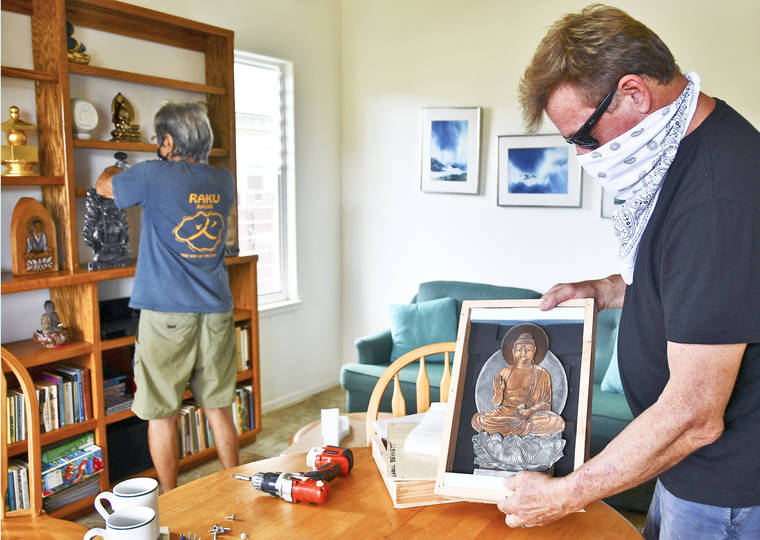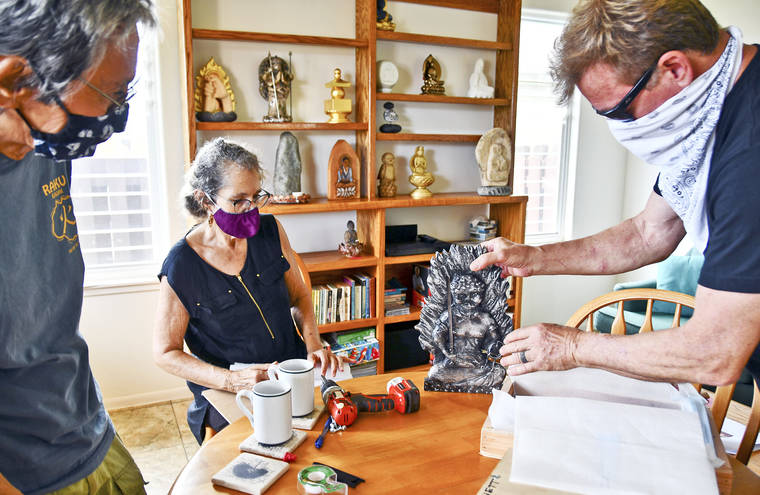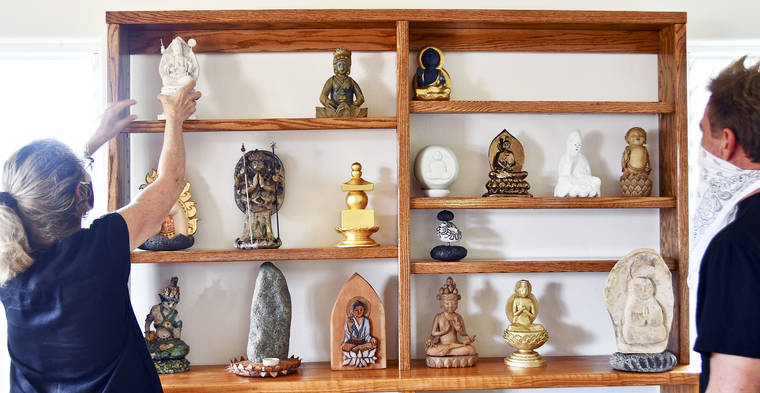LIHU‘E — Brian and Molly McKenzie have been receiving guests every few days at their home in Lihu‘e.
These guests have been little Buddha images and icons that have been arriving from different parts of the globe.
“It has been very comforting to have these little statues come to pay us a visit,” said Molly McKenzie, whose ‘ohana unit in their home was filled with these little statues that will later be moved to the Lawai International Center where they will find their new homes in the shrines that are currently empty on the hillside.
Kaua‘i artist Ray Nitta and a group of volunteers, including Kimberlin Blackburn and Diane Nitta took on the art project to create 46 images to replace those missing from the 88-shrine pathway in Lawai.
Artists around the world were asked to create their interpretation of a particular shrine on the island of Shikoku, Japan. These images were earmarked for the hillside in Lawai.
“These images are contemporary interpretations of historic figures,” Nitta said. “This project is based on the Japanese concept of dana, or generosity of spirit. The community of Kaua‘i is blessed in so many ways. The generosity of these 46 artists is just one more expression of this blessing.”
The result of this endeavor includes the Buddha statues and images that started arriving at the McKenzie’s home since the start of the COVID-19 pandemic. Saturday was the date Kaua‘i artists were given the call to bring their artwork to the house, where they were met by Brian McKenzie, Nitta, and artist Kim Blackburn.
“We’re still waiting to see the pieces from Carol Yotsuda and Sally French,” Nitta said. “They’re supposed to bring their pieces, too. Once we complete the collection, we’re planning to install them in the empty shrines in October. Following that, Rev. Kohtoku Hirao of the Waimea Shingon Mission will bless the entire mountain.”
Aha Hui E Kala, the volunteer group, and the Lawai International Center have any religious affiliation other than the connection to Shingon Buddhism through the history of the 88-shrine pathway. The shrines and images within the shrines have not been sanctified as thus, are objects of art rather than religious icons, states a release prepared by Nitta and the McKenzies.
The 88-shrine pathway, maintained by the Lawai International Center, was built as a private endeavor between 1902 and 1904 by Kiyoshi Yamamoto as a miniature version of the 88-shrines pilgrimage on Shikoku Island in Japan, according to information in the release.
Yamamoto emigrated to Lawai following the Hawai‘i Land Act of 1895 that allowed foreign nationals to present letters of denization in their application for homesteads in lieu of citizenship. He was probably influenced by the miniature pilgrimage course in Yamaguchi Prefecture of Japan, and sand from each temple in Japan was placed under each of the little concrete shrine replicas built on the Lawai hillside.
Following World War II, the shrines and pathway fell into disrepair and overgrowth until Nitta discovered the abandoned pathway while installing doors on a home above the property. That discovery led to the birth of Aha Hui E Kala and the Lawai International Center.







